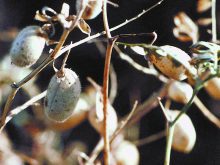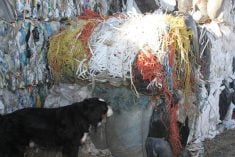Charlene Gray wants to turn around the fortunes of Bankend, Sask., one person at a time.
“In all rural communities, everybody’s come to the point where they feel, ‘is there anything left in rural Saskatchewan worth fighting for?’ ” she said.
Gray wants to channel discouragement, anger and aggression into something productive and get more people involved in community rejuvenation.
A farmer, rural municipality councillor and school trustee, Gray said her community may attract a feedlot or a value-added wheat or flax business.
Read Also

Message to provincial agriculture ministers: focus on international trade
International trade stakeholders said securing markets in the face of increasing protectionism should be the key priority for Canada’s agriculture ministers.
It has already established a non-profit recycling plant that is well used locally and by neighbouring communities.
Gray said the amalgamation of school divisions presents many challenges, including the need to work together as a larger, more culturally diverse group.
She received advice about those challenges at a workshop on embracing diversity, presented recently in Saskatoon by the Saskatchewan Council for Community Development.
“It gave me a better understanding that we are all the same except we look at each other differently,” Gray said of the workshop conducted by Bob Chadwick of Consensus Associates of Oregon.
Chadwick guided Gray and 30 participants from farm, disabled, Métis and business backgrounds through the steps from conflict to resolution and consensus.
He has conducted workshops for SCCD for four years. Other sessions have focused on managing conflicts around scarcity, managing change and dealing with conflict.
He and SCCD followed this workshop with at-risk youth sessions in rural Saskatchewan.
Chadwick said his workshops attract those who want to manage conflict in their lives and relationships.
“I help them resolve it and help them learn how to do it,” said Chadwick, noting people become empowered and move from dependency to taking charge.
“My intent is to make people productive.”
While managing a national forest in the 1970s, Chadwick became aware of a growing movement toward participatory decision-making. He saw the need for a process to bring people together and keep them from polarizing on issues.
“I learned they wouldn’t accept anything but 100 percent agreement,” he said.
Judy Riou, SCCD workshop co-ordinator, said Chadwick has a process that works for all, starting with getting participants to define the problem, exploring best and worst outcomes and moving on to solutions.
“A lot talk about it (the problem), but never go beyond that,” she said.
Participants work in small groups and learn from one another. They even spend a day in a wheelchair to gain empathy for the disabled.
Participants speak in turn and learn to listen without interrupting.
“People find when they listen, it’s amazing the things you will hear,” Riou said.
Participants also take on roles as recorder and presenter, which they can take back and use as facilitators at meetings in their communities.
For rural communities, Chadwick suggested the best way to start is by bringing people together and finding a positive purpose.
He said people need to identify fears and worst case scenarios and then create a purpose by considering the best outcomes.
“The research shows that if people have a purpose, they’ll make it happen,” he said.










